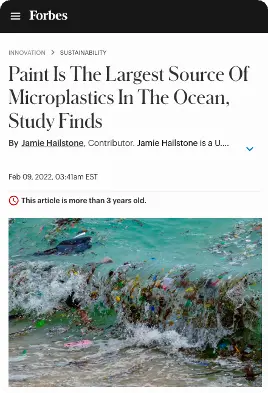The Evolution of Coatings
The European Union has committed to phasing out harmful chemicals like PFAS and reducing reliance on solvent-based paints by 2030 as part of its Chemicals Strategy for Sustainability.
But even sustainable paints produce rinse water waste - and that still needs to be handled legally and safely.
Natural Pigments
Early humans used charcoal, ochre, and crushed minerals on cave walls. No art school. Paint was their voice and their survival.
Industrial Chemistry
Lead and solvent paints brought strenght and danger. Lead dust. VOC fumes. Toxic runoff. The price of progress was poisoning us and the planet.
Water-Based Paints
Water-based paints started pushing out solvent-based ones. Cleaner air. Safer jobs. A game-changer indoors and at home.
Toward Bio-Based Coatings
Paint makers are going green, without going soft.
- Bio-based paints
- Low-VOC formulations
- Greater transparency in ingredient sourcing
High performance, no excuses.
What Is Paint Rinse Water?
Rinse water happens when paint meets water, cleaning brushes, rollers, spray guns, or factory gear. One wash and you've got contaminated water.
Water Based paints contain:
- Pigments, binders, heavy metals
- PFAS (especially in fire-retardant coatings)
- Microplastics and synthetic compounds
A 2022 study revealed paint is the leading source of microplastic pollution in oceans ( source)
The Hidden Risk: Illegal Dumping
Toxic dumping is on the rise, and often slips under the radar. More companies are flushing dangerous chemicals straight into the sewer. No treatment. No shame. It's illegal. It's wrecking the environment, our health and our drinking water. Read the article →
Consequences of Illegal Dumping
- Contamination of ditches, rivers, and lakes
- Disruption of treatment processes at water purification plants
- Health risks, especially due to carcinogenic substances
- Unfair competition for companies that do operate sustainably and responsibly
Did You Know...
- Just one liter of paint rinse water can pollute thousands of liters of clean water
- Most local recycling parks don't accept paint rinse water
- Businesses are legally required to dispose of it correctly
- Collected paint rinse water can be processed and reused in the manufacturing process of new products
What can you do?
Clean Water Global helps companies handle rinse water and chemical waste the safe, circular way. Stop illegal dumping. Stay compliant. Protect the planet and the future.
Dumping rinse water? Illegal in Europe. No disposal certificate means big fines, failed audits, and full blame for environmental damage.
Interested in how you can take care?
Contact us






























